Related Research Articles

St. Landry Parish is a parish located in the U.S. state of Louisiana. As of the 2020 Census, the population was 82,540. The parish seat is Opelousas. The parish was established in 1807.
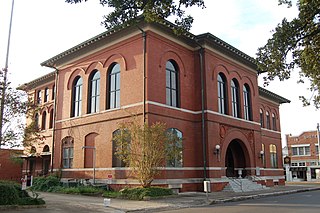
Opelousas is a small city and the parish seat of St. Landry Parish, Louisiana, United States. Interstate 49 and U.S. Route 190 were constructed with a junction here. According to the 2020 census, Opelousas has a population of 15,786, a 6.53 percent decline since the 2010 census, which had recorded a population of 16,634. Opelousas is the principal city for the Opelousas-Eunice Micropolitan Statistical Area, which had an estimated population of 80,808 in 2020. Opelousas is also the fourth largest city in the Lafayette-Acadiana Combined Statistical Area, which has a population of 537,947.
Cornelius C. Duson, was a legendary Louisiana lawman. He was the sheriff of St. Landry Parish, Louisiana from 1874 to 1888. During his career, he was known for his dogged determination.

Lafayette, Vermilionville, or the Lafayette metropolitan statistical area per the U.S. Office of Management and Budget, is the third largest metropolitan statistical area in the U.S. state of Louisiana. Located in the south central Acadiana region, it covers five parishes. At the 2020 U.S. census, 478,384 people lived in the metropolitan area, making it the 116th most populous in the United States and one of Louisiana's fastest growing metropolises; in 2010, its population was 273,738 and it outpaced the Shreveport–Bossier City metropolitan area in 2015.

Beau Chêne High School is a public secondary school located in southeastern St. Landry Parish between the communities of Grand Coteau and Arnaudville in the state of Louisiana, United States. The school was founded in 1991 when Sunset, Leonville, and Arnaudville High Schools were consolidated to form one centralized high school. The school serves the communities of Arnaudville, Cankton, Grand Coteau, Leonville, and Sunset. It is located at 7076 Highway 93, Arnaudville, Louisiana. Beau Chene High School has been cited for demonstrating inclusion among all their students.

The Lafayette–Opelousas–Morgan City combined statistical area is made up of seven parishes in the Acadiana region of southern Louisiana. The statistical area consists of the Lafayette Metropolitan Statistical Area (MSA) and two micropolitical statistical areas (μSAs) – Opelousas, Louisiana Micropolitical Statistical Area and Morgan City, Louisiana Micropolitical Statistical Area. The region consists of seven parishes: Acadia, Iberia, Lafayette, St. Landry, St. Martin, St. Mary, and Vermilion Parishes. As of the 2010 census, the CSA had a population of 604,784.
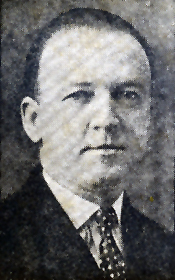
Henry Dominique Larcade Jr. was a U.S. Representative from Louisiana.
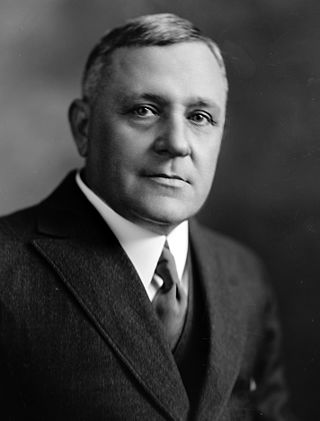
Henry Garland Dupré was from 1910 to 1924 a Democratic member of the United States House of Representatives for Louisiana's 2nd congressional district, based about New Orleans, Louisiana.

The 2002 United States Senate election in Louisiana was held on November 5, 2002. Incumbent Democratic U.S. Senator Mary Landrieu won re-election to a second term, although she did not earn 50% of the vote in the first round and was therefore forced into a runoff election with Republican Suzanne Haik Terrell, the Louisiana Elections Commissioner.
Gilbert Louis Dupré Sr., was a self-educated lawyer and state representative from Opelousas, Louisiana, known for his initial political opposition to Governor Huey Pierce Long Jr. He held his state House seat from 1913 to 1932. A native of St. Landry Parish in South Louisiana, he maintained his legal office for many years in Opelousas.
Michael Huval, also known as Mike "Pete" Huval, is an American politician and insurance agent from Breaux Bridge, Louisiana, currently serving as a Republican member of the Louisiana House of Representatives for District 46 in St. Martin Parish.
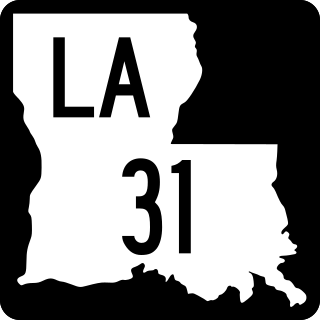
Louisiana Highway 31 is a 54.6-mile-long (87.9 km) north–south state highway in Louisiana that serves Iberia, St. Martin, and St. Landry parishes, extending from LA 182 in New Iberia, and ending at the same highway in Opelousas.
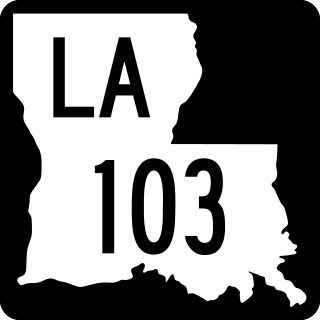
Louisiana Highway 103 is a state highway in St. Landry Parish, Louisiana, United States, that spans 39.5 miles (63.6 km) in a wide semi-circle around the north side of Opelousas. The route is not bannered but runs in an overall west–east direction from U.S. Highway 190 near Lawtell to LA 31 in Leonville. Along the way, it passes through the towns of Washington and Port Barre.

The Opelousas massacre, which began on September 28, 1868, was one of the bloodiest massacres of the Reconstruction era in the United States. In the aftermath of the ratification of Louisiana's Constitution of 1868 and the Fourteenth Amendment to the United States Constitution, tensions between white Democrats and Black Republicans in St. Landry Parish, Louisiana escalated throughout the summer of 1868. On September 28, white schoolteacher and Republican newspaper editor Emerson Bentley was attacked and beaten by three, Democratic white supremacists while teaching a classroom of Black children in Opelousas, Louisiana. Rumors of Bentley's death, while unfounded, led both Black Republicans and white supremacist Democrats, including the St. Landry Parish chapter of the Knights of the White Camelia, to threaten violent retribution. In the days following Bentley's subsequent covert flight to New Orleans, the massacre began. Heavily outnumbered, Black citizens were chased, captured, shot, murdered, and lynched during the following weeks. While estimates of casualties vary widely, several sources number the deaths between 150 and 300 black people and several dozen whites. Following the massacre, the Republican Party in St. Landry Parish was eliminated for several years.

The Opelousas Historic District, in Opelousas in St. Landry Parish, Louisiana is a historic district which was listed on the National Register of Historic Places in 1989.

Vance Gabriel Plauché was an American attorney and politician from Louisiana. A Democrat, he served for a single term in the 77th Congress, from 1941 to 1943.
Edmond Ducre Estilette, known as E. D. Estilette, was a politician and lawyer in Opelousas, Louisiana. He served in a number of public positions, most notably speaker of the Louisiana House of Representatives at the end of Reconstruction in 1875. Estilette oversaw the creation of one of the most infamous Black Codes of the post-Civil War era, but he was later seen as a moderating force in the turbulent politics of that era.
John Peter Malveaux is an American serial killer and rapist who committed between four and five murders around Opelousas, Louisiana from January to October 1997. Following his arrest and confession to the crimes, Malveaux pleaded guilty on all counts and was given four life terms without parole.

John Lyons was a carpenter, bridge builder, cotton-plantation owner, and steamship captain of Louisiana, United States. Lyons is best known today as the enslaver of Peter of the scourged back, who escaped to Union lines in 1863, and whose whip-scarred body ultimately became a representative of the physical violence inherent to the American slavery system.
References
- ↑ "About St. Landry Clarion. (Opelousas, La.) 1890-1921". Library of Congress's Chronicling America.
- ↑ "St. Landry Clarion | LSU Libraries".
- ↑ N. W. Ayer & Son's American Newspaper Annual. N.W. Ayer and Son. 1892.
- ↑ "St. Landry Clarion Archive, Opelousas, Louisiana, 1890–1921". Newspapers.com .
- ↑ Carola Lillie Hartley (May 24, 2019). "Parlons Opelousas: Raymond Breaux and the St. Landry Clarion". Daily World . Opelousas, Louisiana.
- ↑ "The Tourist Court on West Landry Street » St. Landry Now Online Newspaper » Opelousas & St Landry Parish, LA". 26 October 2022.